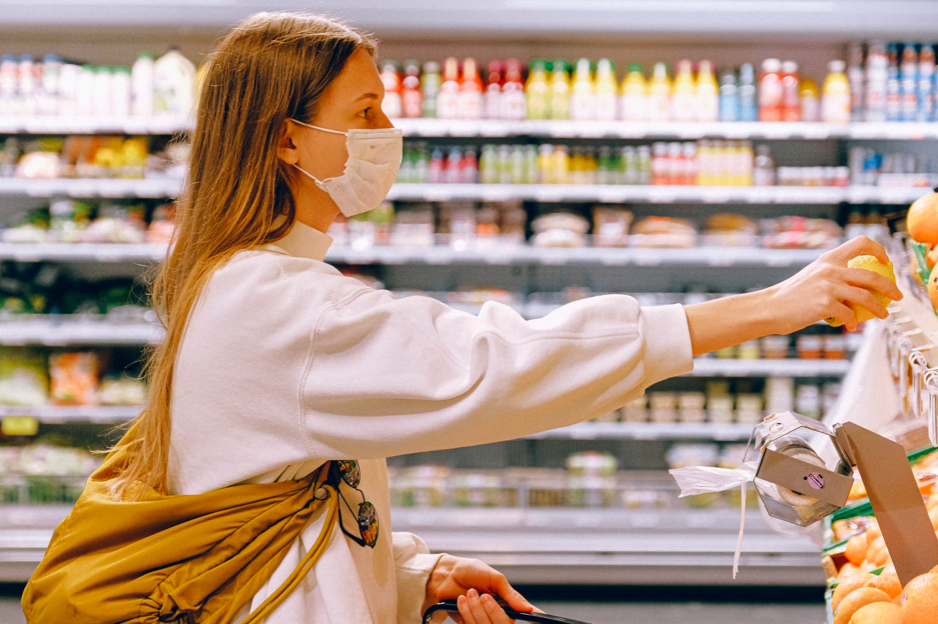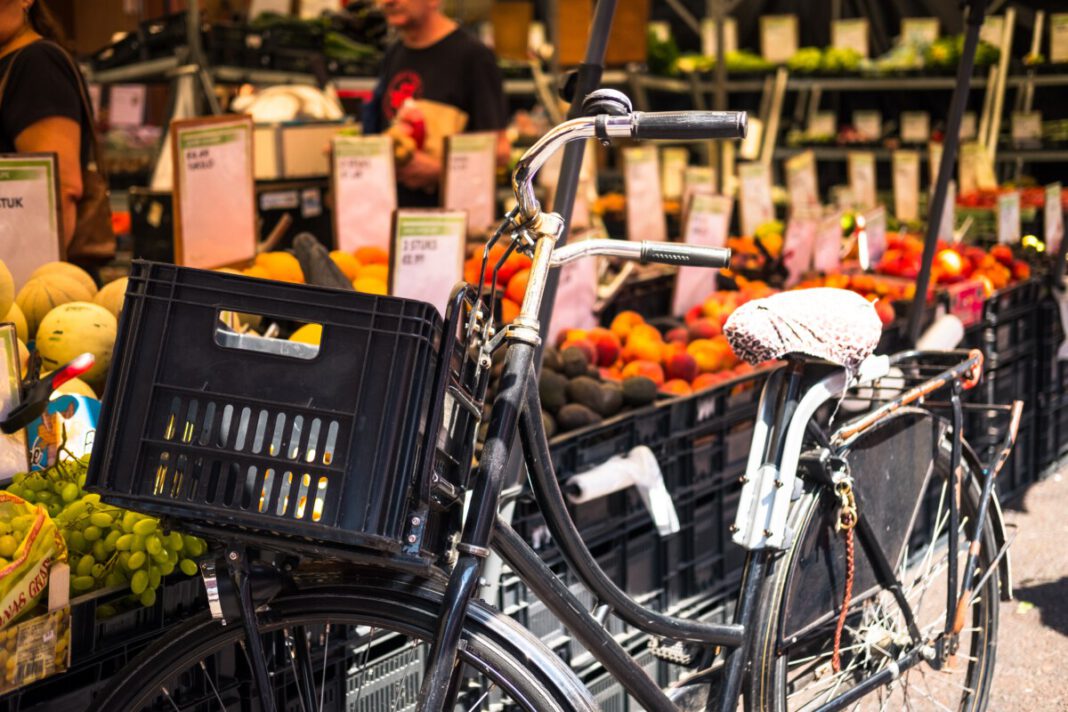Trays of Heineken wind through (the slightly more separated) tables on terraces, streets are teeming with bicycles, and Kalverstraat is no longer the place for a quiet midday stroll. But despite the easing of restrictions in the Netherlands, the ways in which the ongoing Covid-19 pandemic has altered the daily to-and-fro of our lives have not been forgotten.
People across the world were forced to settle into more simple routines, in which the days gradually revolved around the domestic. A focus of these new routines became carefully considering, creating and enjoying daily meals. The familial and neighbourly sharing of food has been both a source of joy, and an expression of resilience. But the pandemic has also exposed the striking imbalance of our relationship with nature, and the fragility of our food system.
While life under lockdown may have restored the appreciation of food for some, it has also exposed the inequalities that exist between those whose meals can instantaneously arrive on Deliveroo bicycles, and those forced to continue to work to make that possible. The prediction that 60 million people are now at risk of extreme poverty, juxtaposed with imagery of colossal amounts of food waste, starkly exposes the deep inequality and fragility of modern food systems. And remember those barren supermarket shelves? The pandemic shocked Westerners into the realisation that there is nothing immediate about food.

Human resourcefulness in times of crisis
Striking progress has been made in combating extreme poverty. Indeed, “newspapers could have had the headline, ‘number of people in extreme poverty fell by 137,000 since yesterday’ every day in the last 25 years,” says economist Max Roser. However, despite hopeful statistics like these, to feed the Earth’s predicted population of 10 billion people in 2050, we will need to produce 56% more food while avoiding both a billion or more people starving, and further irreplaceable damage to our planet’s resources.
Climate change is without a doubt one of the greatest challenges of our time. But while it’s easy to feel as though we’re steaming towards an inescapable disaster, it’s important to remember that climate change isn’t something that we can’t do anything about (at least for the moment). Contrary to popular belief, humans have proven time and time again throughout history to be both resilient and resourceful in times of crisis. Just have a read of historian Rutger Bregman’s book ‘Human Kind: a Hopeful History’, in which he makes a compelling case for the better nature of humanity. There are choices we can start making today that will impact our tomorrow for the better.
This is not the first time that a crisis has provoked the desire to reform our relationship with food. Our Food Problem, published in 1939, demanded a post-war reconstruction of the food system. So the question that remains is this: can we harness progressive ingenuity in the wake of this crisis to push for a radical rethinking of our strained relationship with food and nature?
The innovative developments towards reshaping the future of our food right here in the Netherlands proves that yes, we can, and emphasises the imperative fact that yes, we must. The Netherlands is the second largest exporter of tomatoes and onions, and the largest exporter of eggs in the world. For such a tiny country, this is quite a feat. The Dutch are the masters of efficiency and resourcefulness, and innovative developments so far suggest the Netherlands could be at the forefront of the mission to redefine our currently unstable and unsustainable relationship with food. And as one of the world’s top food exporting nations, it has a pretty good standing to do so.
Reimagining our communities through the lens of food
Dutch architecture and urban design practice MVRDV’s project in Almere Oosterwold reimagines city planning through the lens of sustainability, community and food. Within Oosterwold, free design and construction is limited only by the prioritisation of a “productive landscape” to maintain the rural character of the area: Oosterwold is 18% construction, 8% roads, 13% public green, 2% water and 59% urban agriculture. What is particularly inspiring about Oosterwold is the unprecedented way in which rural nature has been integrated into its development, making the project a living and breathing microcosm of a truly visionary idea. The thinking behind Oosterwold recognises our responsibility within the future construction of communities, and the dire consequences of the current imbalance in the relationship between the urban and the rural. By integrating sustainable agriculture into the planning process, MVRDV uses food as the connecting tool to build the community from the ground up.
Ever heard of the town of Wageningen? It’s maybe not included in Lonely Planet’s top ten Dutch highlights, but Wageningen is a little town with a big ambition: solving our food problem through technological innovation. Located in the town which has now been rebranded as “Food Valley”, Wageningen’s university is developing innovative growing technologies to combat our current system’s unsustainable draining of planetary resources. Think vertical farming, plant-based meat and gene-editing.
The “next generation growers” of Duijvestijn Tomaten have created a sustainable farm which grows tomatoes with mineral water, no soil and zero pesticides, using 50% less energy than a standard farming process. Doubly insulated greenhouses are home to thousands of tomato plants, which grow in small balls of mineral wool under LED lights.
The innovation of the scientific solutions on futuristic tomato farms is striking, and the productive urban spaces such as Almere Oosterwold emphasise collectivity and inclusivity. But the ongoing challenge is to ensure that such initiatives remain affordable, and can be readily integrated within inner city spaces. Political change is vitally important when it comes to tackling our food problem.
Investment in planning and in economic systems which take sustainability and environmental impact into account is needed on a large scale to make a real impact globally. The municipality of Amsterdam have made steps towards this too. The city is now the first in the world to adopt Kate Raworth’s holistic donut economic model, a circular economic framework which takes planetary boundaries into account.
Sitopia: a “practical, doable, reachable version of utopia”
The driving ideas behind these projects are in dialogue with other progressive thinkers, most notably British architect and author Carolyn Steel. Steel’s concept of “sitopia” — or “food-place” — places food as the central idea to human life: “’Sitopia’ is a practical, doable, reachable version of utopia,” says Steel. Steel argues that the balance between the city and the countryside, from which we are both physically and psychologically distanced, is essential. Her solution for regaining this crucial equilibrium is to rebuild our future communities through the lens of food. Steel proposes that the balance between humans and the urban, with nature and the rural, must be regenerated. In doing so, we can directly address the consequences of the way we eat: countering climate change, mass extinction, deforestation, soil depletion, pollution, water scarcity, pandemics and diet-related disease. Sounds pretty good right?
Positive choices for the future
These sustainable projects in the Netherlands encourage the hopeful idea that “sitopia” already exists in pockets. There are plenty of examples further afield too: Growing Underground in London is a pesticide-free farm that occupies tunnels which served as bomb-shelters during the second world war, and the “gangsta gardener” in Los Angeles creates community gardens in the city’s unused spaces. The choices we make to combat climate change and crises such as pandemics do not necessarily have to be sacrifices: they can be positive, liberating acts. As Steel powerfully notes, “food is both the stuff of life and its readiest metaphor; it is the most powerful tool for reshaping the world that we never knew we had.”
Whether it is planting windowsill dwelling herbs, or campaigning for political initiatives that strive to rebuild our relationship with nature, these choices are ours to make. If we make them now, we might just have time to ensure that the act of sharing good food is one which can be enjoyed by the many, for many more years to come.
Feature Image: Euan Cameron/Unsplash





